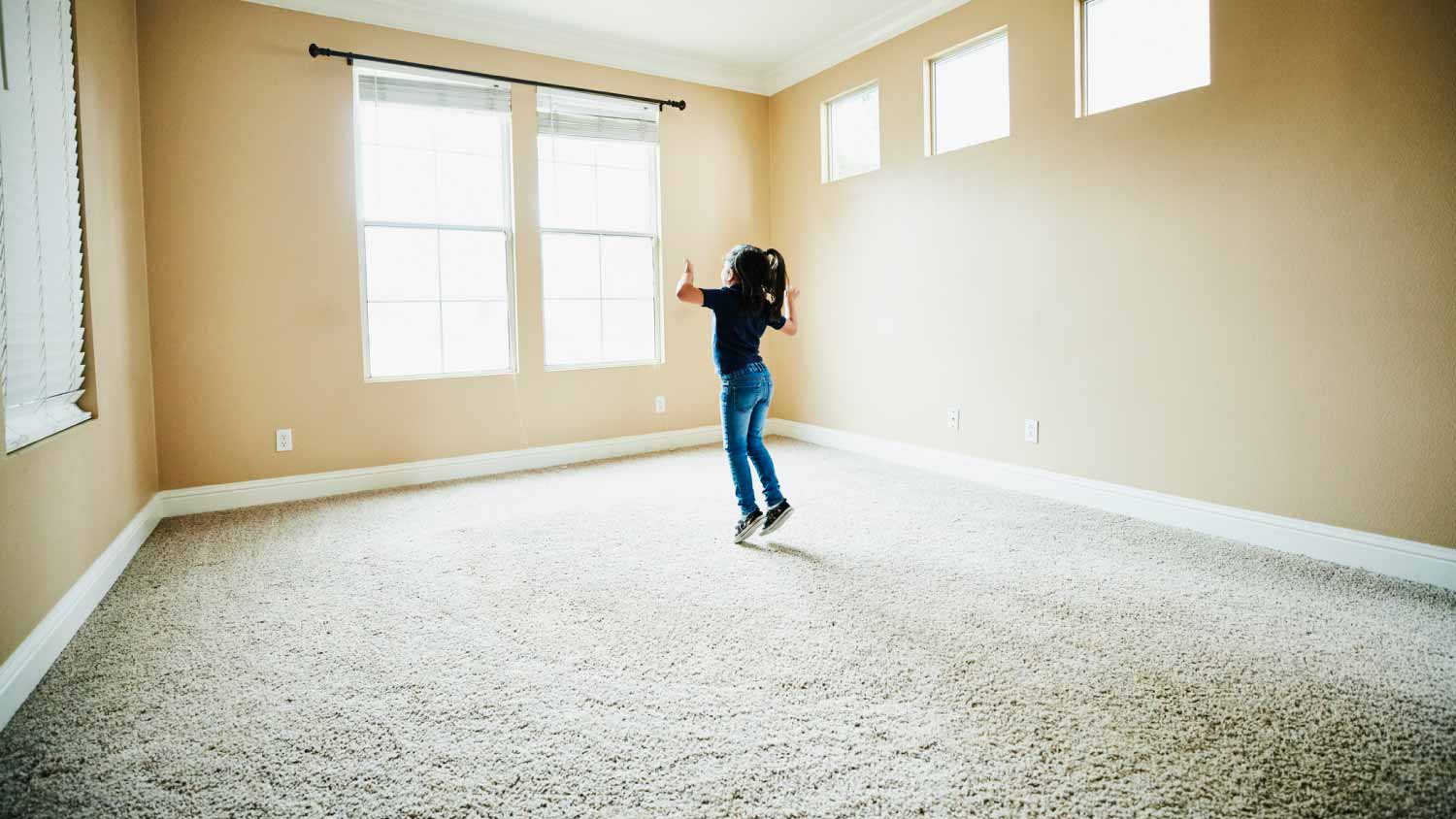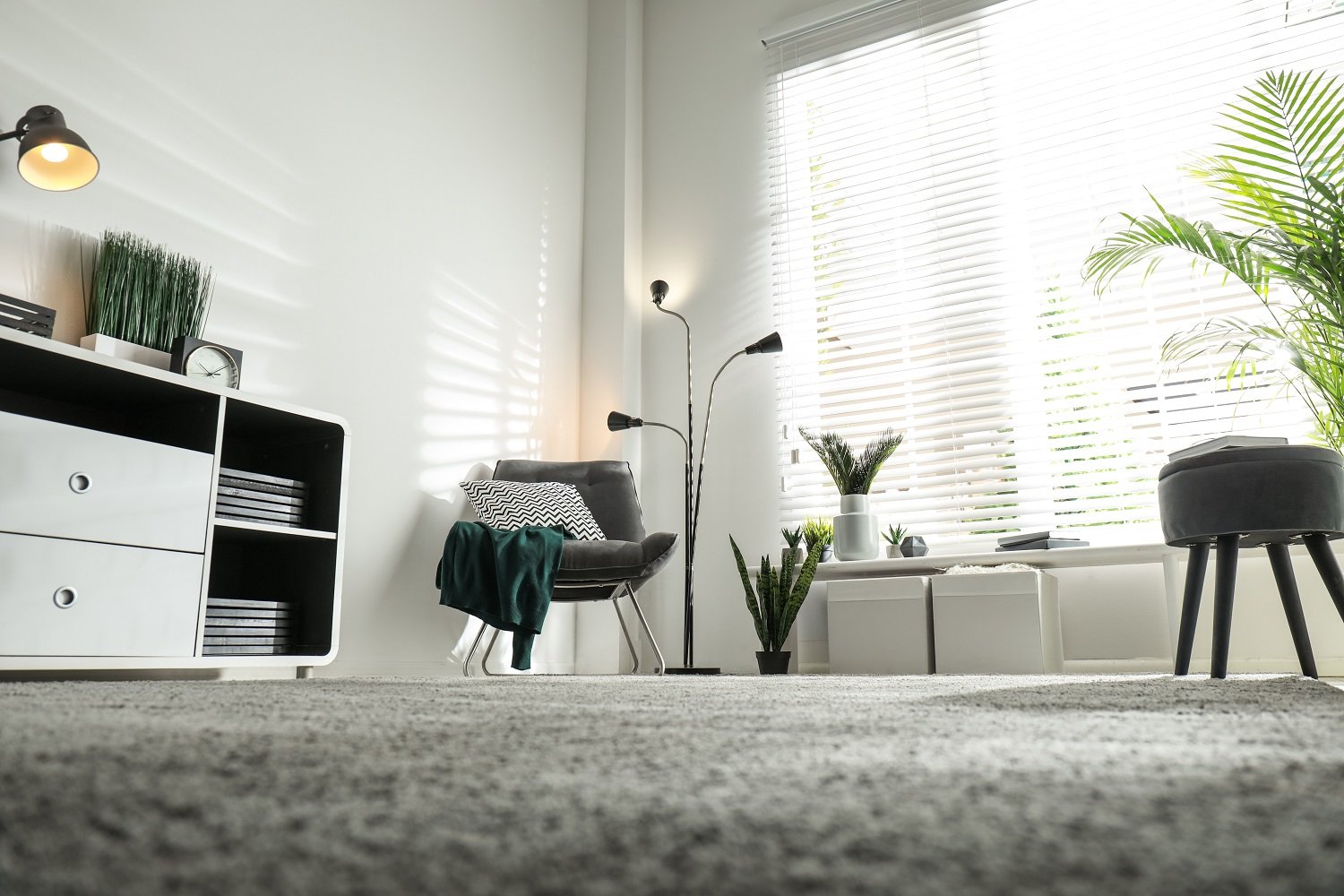What’s the Best Carpet for Living Rooms? These 5 Options Are Ready to Impress
The best living room carpet allows you to live without worrying about getting it dirty


Whether your ideal evening at home involves binge-watching TV, entertaining friends, or simply hanging out with the kids—human and fur baby alike—chances are your living room will be the prime spot for it all. If you’re in the market for new flooring and want to determine the best carpet for a living room, the answer will largely depend on just how much living will be done in the living room.
Buy 10% more carpet than you actually need in case you make any mistakes or need to repair the floor in the future.
5 Best Carpets for Living Rooms
It’s safe to say you’ll be able to choose a carpet in any color of the rainbow. But aside from aesthetics, you’ll want a carpet that can stand up to foot (and paw) traffic as well as dirt and the occasional spill without too much fuss. When you’ve made a decision, you can call up a local carpet installer to help you create the living room of your dreams.
1. Nylon
Nylon creates strong carpet fibers that bounce back, making it a good choice for high-traffic areas. The material is very absorbent, which doesn’t bode well for spills and other messes. However, most nylon carpets are treated with some stain-resistant coating, so this shouldn’t pose a problem for busy households.
| Pros | Cons |
|---|---|
| Soft yet resilient | Absorbs stains easily if not treated |
| Affordable | |
| Durable and long-lasting |
Best for: High-traffic households
2. Olefin
Olefin is a low-pile carpet that stands up to heavy foot traffic and stains well. While you might have to worry about too much sunlight shining on other types of carpet, you can rest assured your olefin carpet won’t fade over the years.
| Pros | Cons |
|---|---|
| Affordable | Not as fluffy as other types |
| Stain- and fade-resistant | Better for commercial use |
| Durable |
Best for: High-traffic living rooms that get a lot of natural light
3. Polyester
Polyester is as soft as it is durable, plus it comes in a rainbow of color options. You might have to vacuum more frequently to keep out the dust and dirt from its lush fibers, but it’s a small price to pay for such a beautiful carpet.
| Pros | Cons |
|---|---|
| Very soft, cushiony feel | Not as easy to keep clean |
| Naturally stain-resistant | Not as durable |
| Many color options | Sheds easily |
Best for: Households that don’t have children or pets
4. Triexta
Triexta has been around for a while, but you might not have heard about it as much as the other, more popular options on this list. Made from cornstarch, triexta is known for its natural softness, durability, and stain resistance. However, it is more expensive than its synthetic counterparts.
| Pros | Cons |
|---|---|
| Mold- and mildew-resistant | More expensive than similar carpet materials |
| Soft and durable | Not as readily available |
| Stain-resistant |
Best for: High-traffic living rooms
5. Wool
If you want to use flooring to warm up a room, look to wool carpeting. This natural fiber is durable and resilient, and it offers a cushiony texture that’s as insulating as it is comfortable to sink your bare toes into.
| Pros | Cons |
|---|---|
| Durable and resilient | Expensive |
| Comfortable texture | Sheds |
| Insulating | Prone to fading |
Best for: Formal living rooms
What to Consider When Choosing Living Room Carpet

Aesthetics are a huge part of choosing the best carpet for your living room, but that’s not the only factor you should think about. Here are a few key components that should come into play when you’re picking a new carpet.
Durability
This should be one of the first and foremost considerations when choosing a carpet. You could get stuck in the weeds with terms like tufts, twist, and density rating, but one of the easiest ways to determine a carpet’s durability is to pick up a sample square and bend it. If it bends backward easily, that's a sign that your carpet may not last as long as you hope it will.
The good news is you don't have to spend all day at the carpet store bending samples to make a decision for your living room. The way to narrow it down more quickly is to choose a carpet material that’s already well-known for its durability. This means that when you start shopping around for flooring, you can focus more on aesthetics knowing that the carpet you’ve chosen can stand up to your lifestyle.
Color
This is another important choice to make for your carpet, and not just for aesthetic purposes. Yes, you should choose a carpet color you like (and one that complements your furniture and decor). But keep in mind that while lighter colors can brighten a room and make it appear bigger, they could be begging for a disaster in the form of a muddy footprint or drink spill. While many carpets have a stain-resistant coating—yes, even white shag carpets—you might want to opt for darker carpet colors that can more easily hide dirt and other messes until you can vacuum or clean it.
Pile

Pile refers to how carpet strands are cut and layered. There are different pile types, heights, and densities. Pile is important for aesthetics and texture, but you’ll want to choose carefully for durability, too. Here’s a quick rundown of common pile types:
Cut pile: This soft pile can easily show the aftermath of foot marks and vacuum marks.
Loop pile: The strands are created in loops for an attractive yet durable aesthetic.
Low pile: As its name suggests, low-pile carpet is cut low at 1/4 inch or less, so it’s good for high-traffic areas or rooms with lots of furniture because the weight won’t make deep dents into the carpet.
Plush: This is a form of cut pile that's very soft. Because the strands aren’t looped, it's subject to wear over time.
Twist pile: In this pile type, strands are twisted for durability and can stand up well to heavy foot traffic and furniture.
Cut and loop: This is a combination of cut and looped strands that vary in height, resulting in a carpet that's both thick and durable—perfect for many living rooms.
Berber: This is a densely woven style of rug that holds up beautifully without shedding or tufting, so it’s a great carpet for stairs and other high-traffic areas.
Stain Resistance
Cleaning your carpet on a regular basis helps prevent dirt and debris from building up on the fibers. Your carpet will look great and last longer if you make cleaning it routine.
Regardless of the carpet type you choose, you want to ensure it can withstand stains. Many carpets are treated with some type of stain-resistant coating—a must-have for any household with pets or children. Many carpets have this as a built-in feature. If not, you can pay extra to have the stain resistance added or choose a similar carpet that already has it.





- How to Choose Carpet for Any Room of Your Home
- What Is the Best Carpet for High-Traffic Areas?
- When Is the Best Time to Buy Carpet and Save on Your Installation?
- The Ultimate Guide to Different Types of Carpet
- What Is the Best Carpet for Bedrooms and How Do You Choose One?
- How Long Does Carpet Last? 7 Signs You Need to Replace It
- The Ultimate Guide to Choosing the Best Carpet for Kids and Pets
- How to Make Homemade Carpet Stain Remover
- What Is the Best Carpet for Stairs and How Do You Choose One?
- Can You Put Carpet Over Carpet? Pros, Cons, and Best Practices












